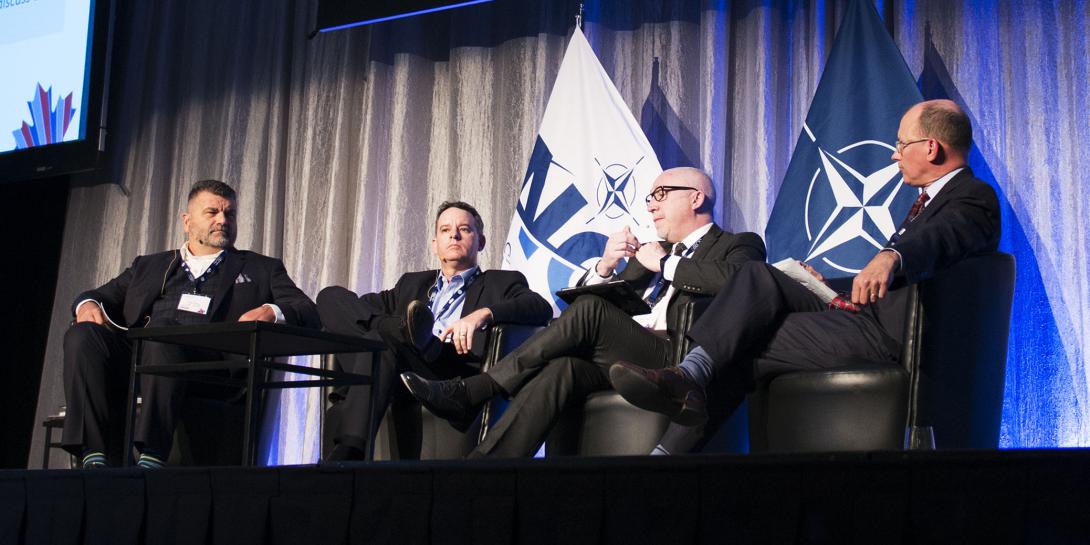It Takes an Ecosystem to Introduce Innovation
Useful methods of encouraging innovation in military cyber must be consolidated to achieve success, according to high-technology executives. Speaking on the second day of NITEC 2017 in Ottawa, this panel of experts outlined useful measures of boosting innovation, and then warned they must be part of a larger overall effort.
Paul MacGregor, senior vice president, security and smart systems, Leonardo, stated this point of view clearly. “Innovation is not just about technology, it’s about process,” he said, cautioning that giving people an environment where they can innovate, with failures and rewards, is an expensive process. Acknowledging the ongoing technology war, he told attendees to strive for innovation wherever possible. “Don’t reinvent the wheel; harness the power of Silicon Valley and other innovation centers around the world,” he advised.
Innovation is not just about technology, it’s about process.—Paul MacGregor, senior VP, security and smart systems, Leonardo #NITEC2017
— Bob Ackerman (@rkackerman) April 25, 2017
Allen Dillon, managing director, Cyber NB, explained that frustration with Canadian cyber inertia impelled the formation of his company. “My own country [Canada] is not moving fast enough in the cyber defense realm,” he declared, adding that Canada must get its house in order before it begins contributing heavily in the international cybersecurity realm.
We had best get our home in order before we start working in the international realm.—Allen Dillon, managing director, Cyber NB #NITEC2017
— Bob Ackerman (@rkackerman) April 25, 2017
Dillon also emphasized the importance of failure in pursuing innovation. Many defense industries have undergone failures before achieving success in their arenas, he pointed out. He endorsed the sentiment of innovation as an ecosystem, saying that it must be viewed as having a different collaboration model.
Jeff Ryder, founder and CEO, Glacier Point, emphasized the importance of sharing information to spur innovation. Companies should be willing to discuss information about some aspects of corporate strategy, he offered. However, classified information should remain confidential.
If it’s corporate strategy, there should be a willingness to talk about some things.Classified, no.—Jeff Ryder, CEO,Glacier Point #NITEC2017
— Bob Ackerman (@rkackerman) April 25, 2017
Ryder noted that operational test agencies (OTAs) are coming back into favor as an excellent way to include non-traditional firms in the acquisition environment. And, open architectures are a simple way to ensure a company has a winning solution.
Open architectures are a simple way to ensure you have the winning solution.—Jeff Ryder, founder and CEO, Glacier Point #NITEC2017
— Bob Ackerman (@rkackerman) April 25, 2017





Comments